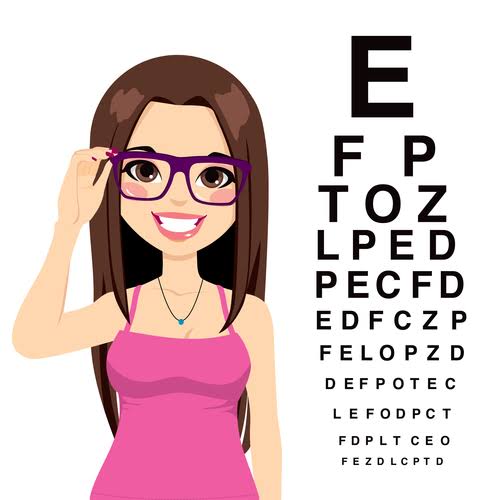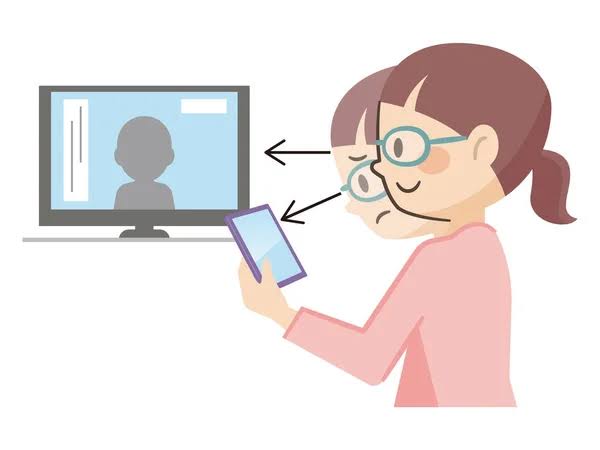Nearsightedness, also referred to as myopia, is a common eye ailment that impacts millions of individuals globally. It is a refractive defect that makes it difficult for someone to perceive far-off objects clearly. Myopia causes distant objects to appear blurry, but up close items remain clear. Identifying the causes of myopia is the first step towards investigating the potential benefits of homeopathy as a therapeutic option.

The Pathology of Myopia
An elongated eyeball that interferes with the appropriate focus of light on the retina is the main cause of myopia. Light rays in a healthy eye are bent by the cornea and lens to exactly converge on the retina. On the other hand, the enlarged eyeball of myopic people causes the focal point to fall in front of the retina. Looking at far-off things causes blurry vision due to this refractive defect.
Stages of Myopia
Depending on the amount of refractive error, which is commonly expressed in diopters (D), myopia can be classified into multiple phases. Among these phases are:
1. Mild Myopia (0 to -3 D): People with mild myopia may see well up close, but they may notice some little blurriness while gazing at faraway things.
2. Moderate Myopia (-3 to -6 D): The reduction in distance vision caused by moderate myopia is more pronounced. Vision up close is unaffected.
3. High Myopia (-6 D or more): This condition can seriously impair vision in both the near and far fields. At this time, there is an increased risk of problems like glaucoma and retinal detachment.
Identifying the myopia stage is essential to creating a successful treatment strategy.
Causes of Myopia
Environmental factors can contribute to the development of myopia, even if genetics plays a major part. Typical causes include some of the following:
– Genetics: Children are more likely to develop myopia if one or both of their parents have the condition.
– Excessive Work: Extended durations of close-up work, such as reading or using digital gadgets, can cause eye strain and raise the risk of myopia.
– Insufficient Outdoor Activity: There is a link between a higher risk of myopia and spending less time outdoors, particularly in childhood.
– Environmental Factors: Additional risk factors include urban living and less exposure to natural light.
Signs and Symptoms of Myopia
Myopia can present with a range of symptoms and indicators, such as:
– Hazy vision when gazing at far-off objects
– Squinting or narrowing of the eyes when attempting to see clearly
– Often occurring headaches, especially after performing tasks involving long-distance vision
– Difficulty identifying distant individuals or objects
For a thorough eye examination, it is imperative that you or someone you know get expert assistance if you are experiencing these symptoms.
Investigations of Myopia
An eye care specialist will conduct a thorough eye exam to determine myopia. This examination may include:
– Visual Acuity Test: This assesses your eyesight at different distances.
– Refraction Test: This measures how light bends in your eye to determine the extent of your myopia.
– Retinal Examination: Because high myopia individuals are more likely to experience retinal problems, it is important to evaluate the retina’s health.
Differential Diagnosis for Myopia
Sometimes, myopia is mistaken for other eye disorders. Among them are:
1. Hyperopia (Farsightedness): In contrast to myopia, hyperopia impairs one’s ability to see up close. Light concentrates in front of the retina.
2. Astigmatism: This condition causes distorted and blurry vision at all distances and is typified by an abnormally shaped cornea or lens.
3. Presbyopia: This age-related disease impairs near vision, which makes it difficult to concentrate on close things, especially when reading.
4. Cataracts: Rather than being a refractive defect, cataracts are a clouding of the eye’s natural lens that result in clouded vision.
Accurate diagnosis is essential for creating a treatment plan that works, even if homeopathic remedies are part of it.
General Management of Myopia
Generally speaking, lifestyle changes, remedial actions, and occasionally medical intervention are used to manage myopia. Here are a few crucial elements:
1. Corrective Lenses: Wearing contact lenses or prescription eyeglasses is the most popular way to treat myopia. These correct the refractive error and provide sharp vision again.
2. Orthokeratology or Ortho-K: This non-surgical procedure uses specially made contact lenses to curve the cornea overnight, improving daytime vision.
3. Atropine Eye Drops: Low-dose atropine eye drops may be recommended in certain situations to slow down the growth of myopia, particularly in children with progressive myopia.
4. Lifestyle Adjustments: Promote outside play, frequent pauses from up-close work, and enough lighting for reading or screen time.
5. Surgical Interventions: Although they have possible dangers and are not appropriate for everyone, surgical procedures like PRK or LASIK may be considered for people with extreme myopia.
Prevention of Myopia
Even though heredity plays a big role in myopia, there are things you can do to lower your risk, particularly in kids:
1. Outside Time: It has been demonstrated that allowing kids to spend more time outside lowers their chance of developing myopia.
2. Balanced Visual Activities: Make sure kids follow a schedule that allows for outside play as well as time away from screens or other activities like reading.
3. Schedule Routine Eye Exams: In particular, if there is a family history of myopia, schedule routine eye exams to identify the condition early.
4. Limit Screen Time: Establish sensible time limitations for using screens and make sure they are at the right distance from one another.
Homeopathy and Myopia – A Complementary Approach
After going over the basics of myopia, it is important to talk about how homeopathy is used to treat it. A complementary and alternative kind of medicine that has grown in popularity recently is homeopathy. It can support and perhaps potentially improve on current medical therapies for myopia, even if it might not completely replace them.
The Principles of Homeopathy
The foundation of homeopathy is the idea of “like heals like,” which states that a drug that can cause symptoms in a healthy individual can also be used to alleviate symptoms in an ill person. Highly diluted substances from plants, minerals, and animals are used in homeopathic treatments.
Restoring equilibrium and promoting the body’s innate healing processes are the two main objectives of homeopathy. Homeopaths choose remedies with great care, taking into account each patient’s unique symptoms, emotional condition, and general constitution.
Homeopathy and Myopia – An Empathetic Approach
Homeopathy treats patients as individuals and as a whole, taking into account not just physical symptoms but also psychological and emotional aspects. Although it can provide supplementary advantages in the management of myopia, it cannot take the place of conventional eye care.
1. Symptom Management: Myopia-related symptoms like headaches, pain, and eye strain may be lessened using homeopathic treatments.
2. Stress Reduction: Eye strain, which is linked to stress and anxiety, can aggravate myopia. These affective aspects can be addressed by homeopathy.
3. Customized Care: Homeopaths treat patients based on their specific constitution, taking into account the full person. This method can take care of underlying problems that could be causing myopia.
Understanding Homeopathic Remedies for Myopia
The selection of homeopathic medicines for myopia is contingent upon the unique symptoms and constitution of each patient. These are a few popular treatments along with their possible advantages:
1. Viola Odorata: Taken in 1C–6C potencies, 3-5 pills three times a day, for myopia with pain radiating from the eyes to the head, particularly above the eyebrows.
2. Ruta Graveolens: Used to treat shortsightedness, headaches, and eye strain, especially from reading small print; take three pills a day, in potencies of 1C–6C.
3. Physostigma: Recommended for increasing myopia with spasm of ciliary muscles and irritability after using the eyes; taken in 3C potency, 3-5 pills three times a day.
4. Oleum Animale: Suitable for short-sighted individuals with smarting in the eyes and misty vision, particularly when there are glistening bodies before the eyes; administered in 3C-30C or 200C potencies, 3-5 pills three times a day.
5. Phosphorus: Indicated for shortsightedness with eye and head fatigue, even without excessive eye use, and sensitivity to light; used in 3C-30C potencies, 3-5 pills three times a day.
6. Gelsemium: Gelsemium can be taken to treat the emotional aspect of myopia when it is accompanied by tension and worry.
It is crucial to remember that homeopathy is very customized, with the remedy selected based on the individual’s constitution and particular symptoms. To get individualized advice, speaking with a licensed homeopathic practitioner is necessary.
The Integration of Homeopathy and Conventional Care
For myopia, homeopathy can be used in conjunction with traditional medical therapies. It is not a substitute for other vision correction techniques, such as contact lenses or prescription eyewear. Rather, it provides a comprehensive method of treating the underlying reasons and psychological aspects that could lead to myopia.
When thinking about myopia homeopathic treatment, it is important to:
1. Consult a Professional: Get advice from a licensed and skilled homeopath who is able to carry out a comprehensive evaluation and offer tailored suggestions.
2. Continue Having Regular Eye Exams: Homeopathic medicine should not take the place of routine eye exams. These tests are crucial for tracking the development of myopia and making sure the right kind of vision correction is applied.
3. Take a Holistic Approach: Managing myopia can be done holistically by combining homeopathic medication, vision correction techniques, and lifestyle changes.

Conclusion: Say Bye to Myopia!
Nearsightedness, often known as myopia, is a common refractive defect that many people experience. Although contact lenses and prescription eyeglasses are still the gold standard for vision correction, homeopathy provides a complementary and all-encompassing method of treating myopia. Homeopathy can be a useful tool in the management of myopia since it takes into account the full individual, including their emotional and psychological well-being.
Keep in mind that the secret to effective management of myopia is the combination of traditional medical care and homeopathy. To maintain the health and clarity of your vision, get individualized advice from trained professionals whenever possible. You should also have frequent eye tests. Your eye health should be your first concern regardless of whether you decide to investigate homeopathic medicines or stick to conventional treatments.
Reach out to us for a Consultation
For any queries, reach out to us at contact@homeopathic.ai
This blog is for information purposes. It’s crucial to note that while homeopathy is a centuries-old practice with many adherents worldwide, always consult a qualified homeopath or medical professional before initiating any treatment.





